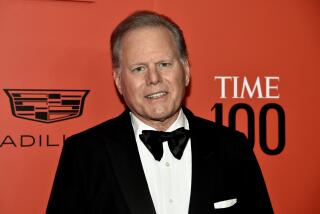Inexact Predictions Take Earnings Toll on Great Western : Banking: The big S & L’s profits in the second quarter fall as a result of an interest rate decline that was slower than expected.
- Share via
CHATSWORTH — Anticipating a rise or fall in interest rates often amounts to a guessing game for potential home buyers, and as Great Western Financial Corp.’s latest results show, sometimes that is true for giant banking institutions as well.
The Chatsworth-based parent of Great Western Bank, the country’s second-largest savings and loan, saw its earnings dip in the second quarter that ended June 30 largely because expectations that interest rates would fall significantly have not yet materialized.
After watching interest rates climb rapidly last year, Great Western had entered the second quarter expecting rates to level off and start to fall. In fact, then-Chief Executive and current Chairman James F. Montgomery said in April that profit margins “can be expected to improve swiftly and significantly” as rates level off in the general economy.
Reflecting this philosophy, Great Western has recently funded many of its loans using money borrowed for 30-day terms from commercial markets. Rates on these short-term borrowings are generally higher than those paid on certificates of deposit and other consumer accounts, but the rates are adjusted more frequently, which leads to cost savings when interest rates fall.
But even though rates did taper off slightly earlier this month, it was too little and too late to help Great Western’s second-quarter results.
“Great Western has put a lot of . . . loans on the books in the past year and a half,” said Gareth Plank, an analyst with Rodman & Renshaw Inc. in San Francisco. “With the rise in interest rates, they’ve had to access a more volatile source of funds, and they got caught short.”
In the second quarter, Great Western reported a profit of $50.4 million, down 10% from $55.9 million in the same three-month period a year earlier. The savings and loan attributed the diminished results to the fact that net interest margins--the profit-making difference between what banking in stitutions charge borrowers and what they pay depositors or other creditors--narrowed to 2.83% in the second quarter from 3.71% in the same quarter a year earlier.
The company has boosted its total commercial borrowings to about $10 billion, up 43% from the beginning of the year, said Ian Campbell, senior vice president at Great Western.
In the latest quarter, the average cost on those borrowings was about 6.4%, compared to the average 5.6% paid on CDs and other new deposits.
“We made a conscious decision to fund loan growth with short-term borrowings,” Campbell said. “If rates do decline, the cost of those short-term borrowings will decline rather rapidly. But we haven’t seen that yet.”
More to Read
Inside the business of entertainment
The Wide Shot brings you news, analysis and insights on everything from streaming wars to production — and what it all means for the future.
You may occasionally receive promotional content from the Los Angeles Times.








